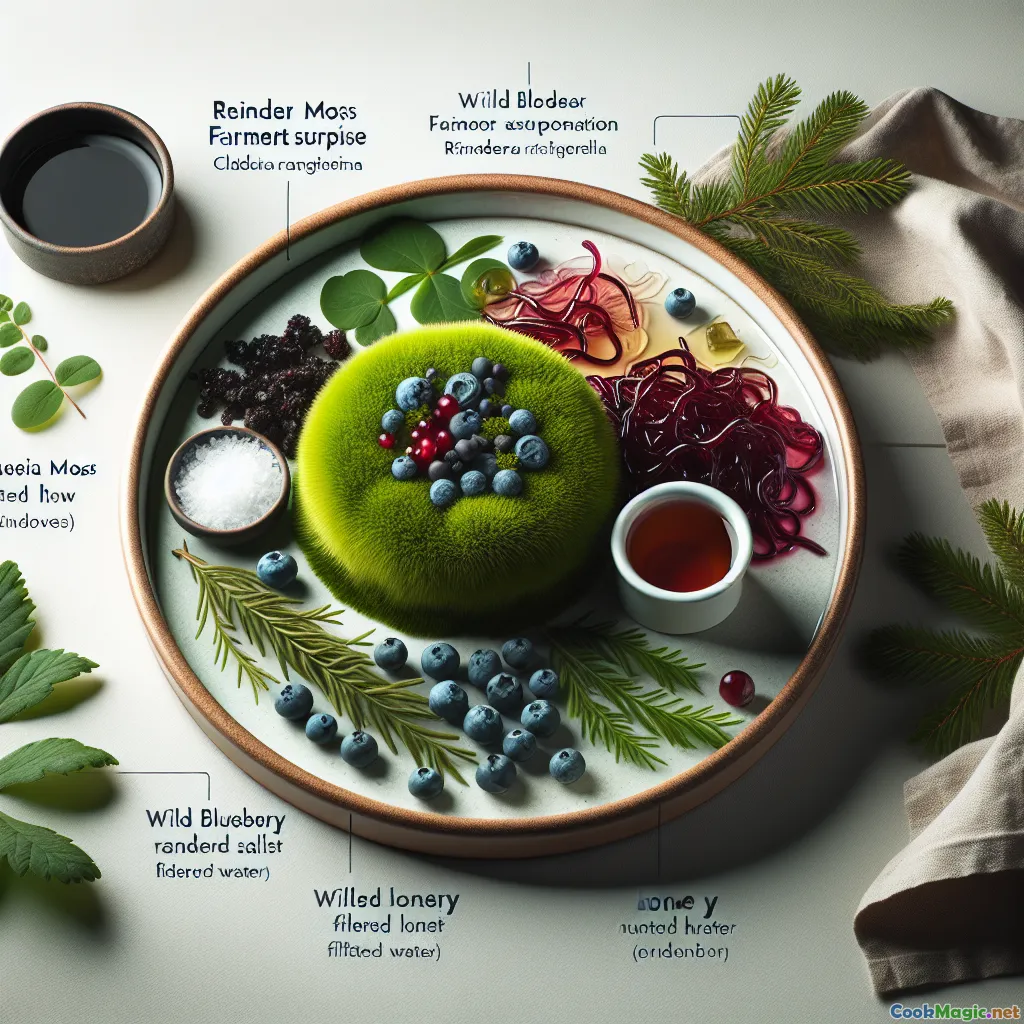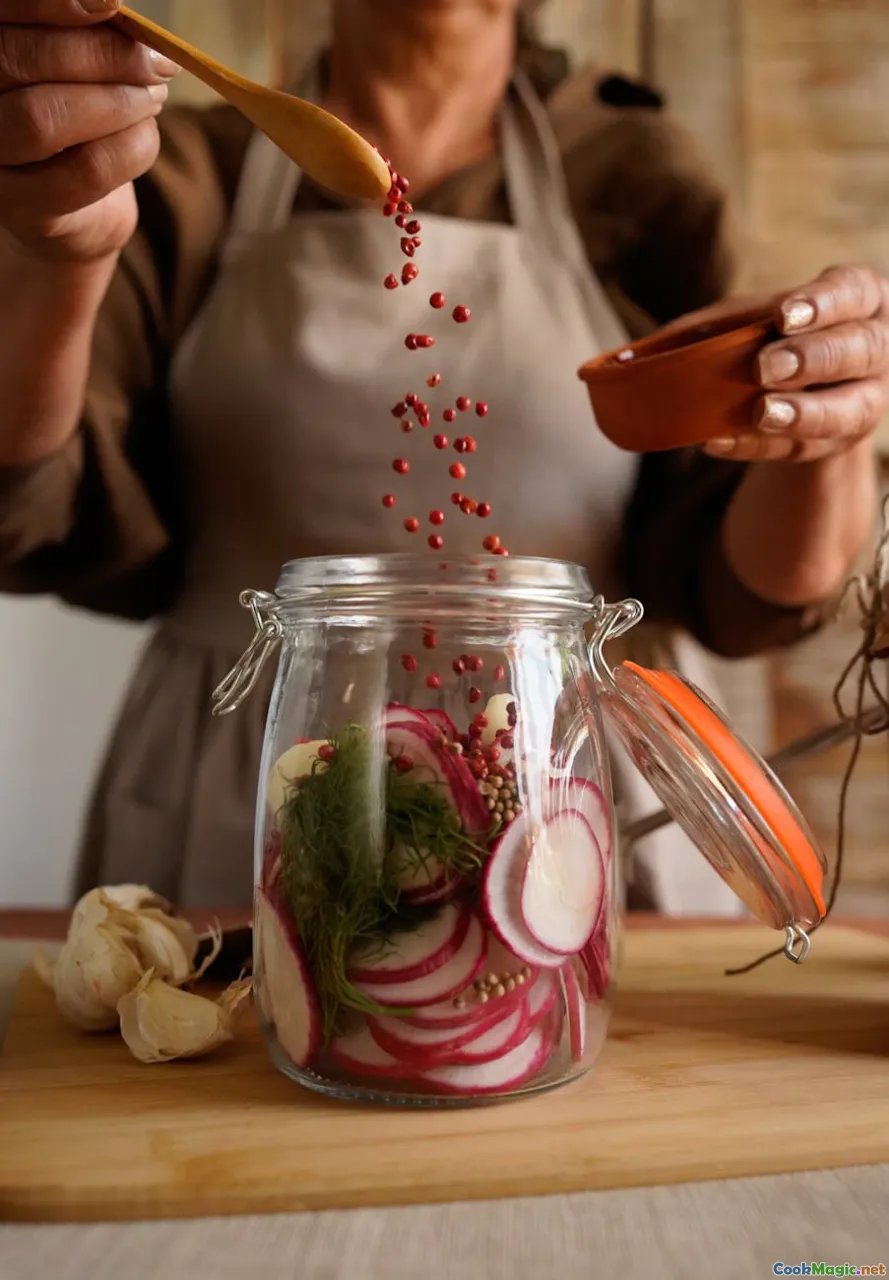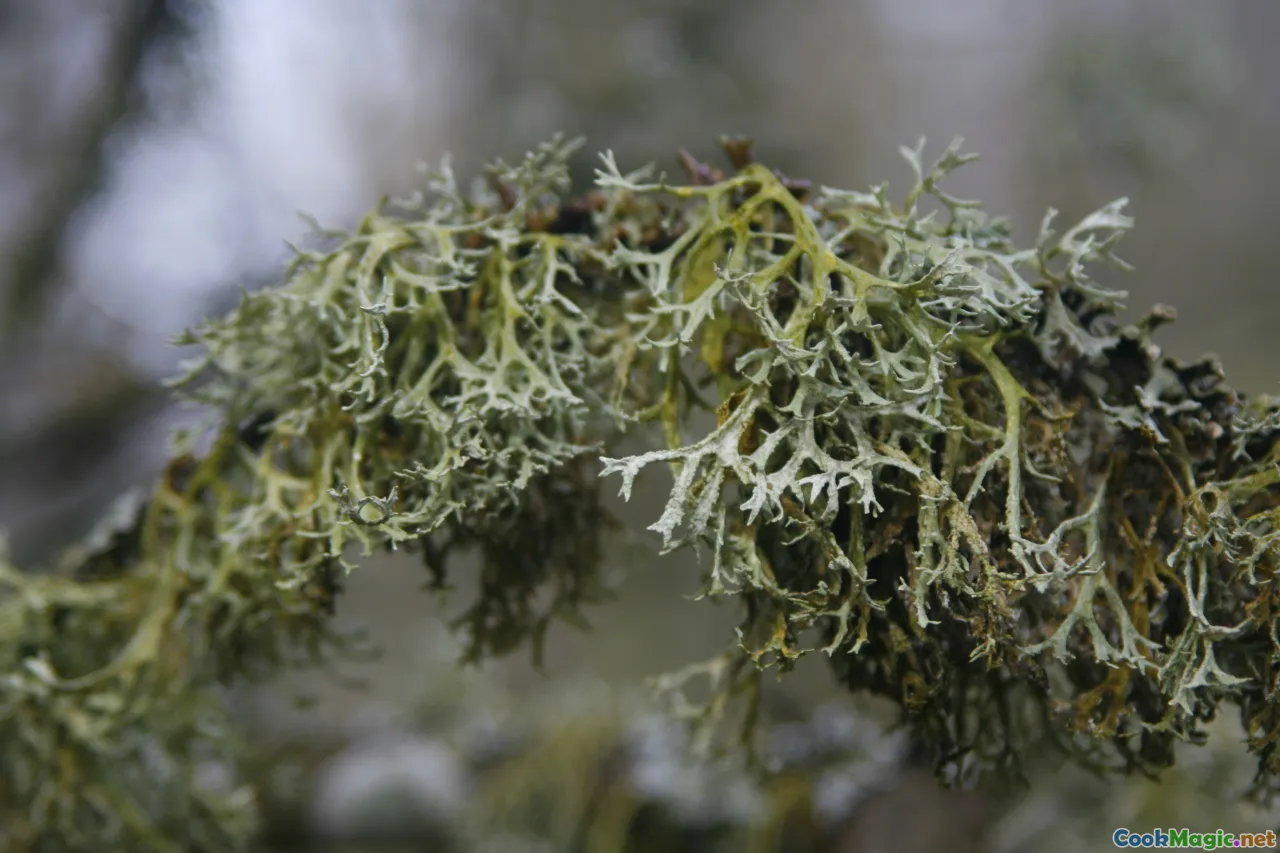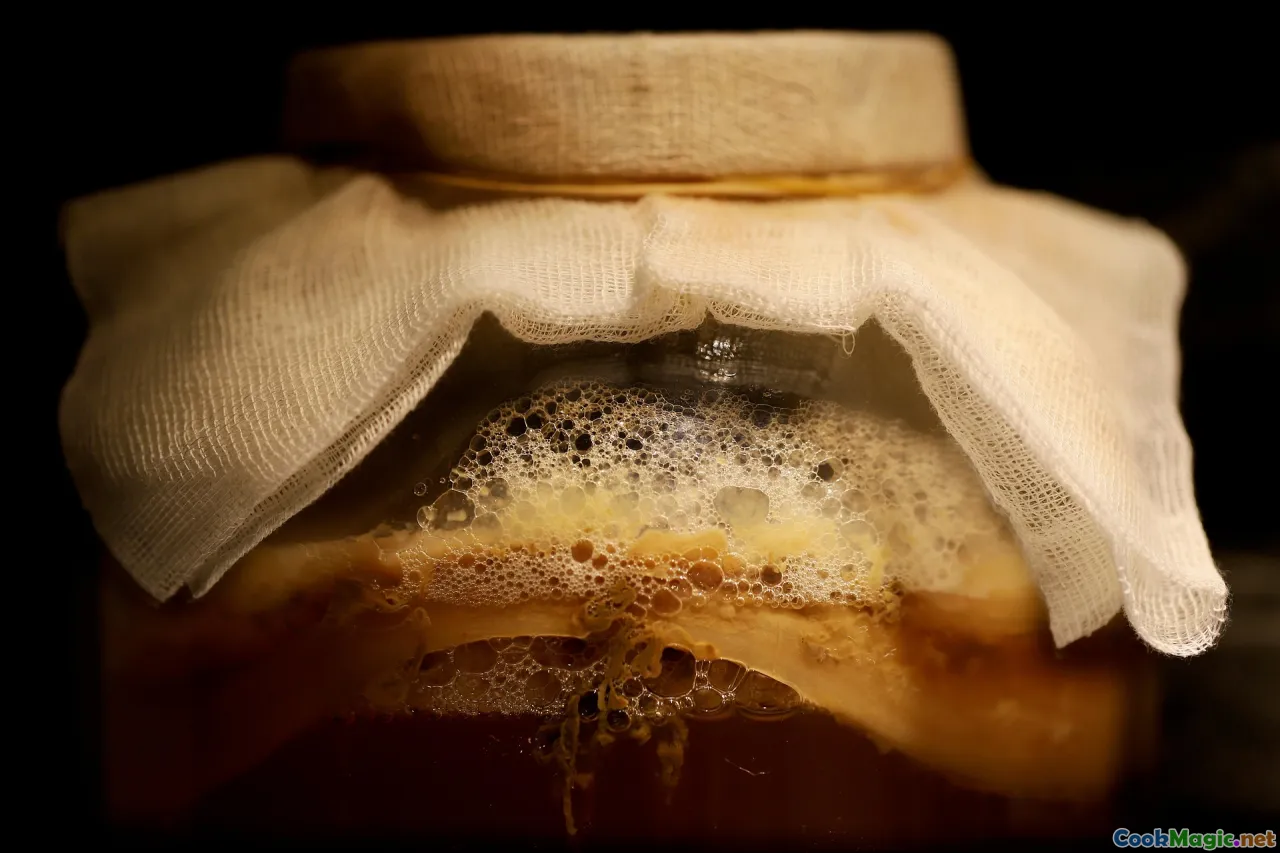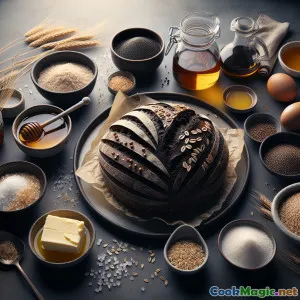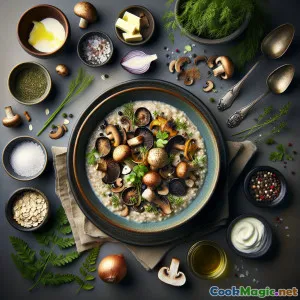
Ẩm Thực Rêu Tundra: Món Ngon Chua Cay Rừng Sâu
(Tundra Moss Ferment Surprise: Wild & Tangy Delight)
(0 Đánh giá)0
384
tháng 7 06, 2025
Báo cáo sự cố
Nguyên liệu
-
100 grams Rêu tuần lộc (Cladonia rangiferina)
(Tươi hoặc khô; nếu khô, ngâm nước trước khi sử dụng)
-
20 grams Lá cây việt quất rừng
(Lá tươi để thêm hương thơm và chất chống oxy hóa)
-
15 grams Muối
(Muối biển, ưu tiên không chứa i-ốt cho quá trình lên men)
-
500 ml Nước lọc
(Không clo, ở nhiệt độ phòng)
-
2 tbsp Mật ong
(Mật ong hoa dại cho vị ngọt tự nhiên)
-
10 pcs quả mộc qua
(Dập nhẹ để thấm gia vị)
(Tươi hoặc khô; nếu khô, ngâm nước trước khi sử dụng)
(Lá tươi để thêm hương thơm và chất chống oxy hóa)
(Muối biển, ưu tiên không chứa i-ốt cho quá trình lên men)
(Không clo, ở nhiệt độ phòng)
(Mật ong hoa dại cho vị ngọt tự nhiên)
(Dập nhẹ để thấm gia vị)
Dinh dưỡng
- Khẩu phần: 4
- Kích thước khẩu phần: 1 bát nhỏ (150g)
- Calories: 90 kcal
- Carbohydrates: 15 g
- Protein: 3 g
- Fat: 0.5 g
- Fiber: 5 g
- Sugar: 5 g
- Sodium: 600 mg
- Cholesterol: 0 mg
- Calcium: 40 mg
- Iron: 1.2 mg
Hướng dẫn
-
1 - Chuẩn bị rêu và lá:
Nếu sử dụng rêu khô, ngâm trong nước lọc lạnh trong 20 phút để làm ẩm và rửa nhẹ nhàng. Rửa sạch lá việt quất và để sang một bên.
-
2 - Chuẩn bị dung dịch muối ngâm:
Hòa tan muối và mật ong tùy chọn vào nước lọc để tạo dung dịch ướp muối.
-
3 - Lọ ủ lên men:
Trong bình lên men sạch, đặt rêu, lá việt quất và quả bách xù tùy chọn. Đổ muối ngâm lên trên, đảm bảo tất cả nguyên liệu được ngập trong dung dịch.
-
4 - Quá trình lên men:
Đậy kín lọ bằng van khí hoặc nắp rời. Ủ lên men ở nhiệt độ phòng (18-22°C) tránh ánh sáng mặt trời trong 7 ngày. Kiểm tra hàng ngày để giữ nguyên liệu chìm trong dung dịch.
-
5 - Nếm thử cuối cùng và bảo quản:
Nếm thử sau 7 ngày. Nếu vị chua đủ, chuyển vào tủ lạnh. Nếu chưa, ủ thêm tối đa 7 ngày nữa. Dùng lạnh hoặc ở nhiệt độ phòng.
Nếu sử dụng rêu khô, ngâm trong nước lọc lạnh trong 20 phút để làm ẩm và rửa nhẹ nhàng. Rửa sạch lá việt quất và để sang một bên.
Hòa tan muối và mật ong tùy chọn vào nước lọc để tạo dung dịch ướp muối.
Trong bình lên men sạch, đặt rêu, lá việt quất và quả bách xù tùy chọn. Đổ muối ngâm lên trên, đảm bảo tất cả nguyên liệu được ngập trong dung dịch.
Đậy kín lọ bằng van khí hoặc nắp rời. Ủ lên men ở nhiệt độ phòng (18-22°C) tránh ánh sáng mặt trời trong 7 ngày. Kiểm tra hàng ngày để giữ nguyên liệu chìm trong dung dịch.
Nếm thử sau 7 ngày. Nếu vị chua đủ, chuyển vào tủ lạnh. Nếu chưa, ủ thêm tối đa 7 ngày nữa. Dùng lạnh hoặc ở nhiệt độ phòng.
Thông tin thêm về: Ẩm Thực Rêu Tundra: Món Ngon Chua Cay Rừng Sâu
Bất Ngờ Bảo Quản Nấm Rêu Tundra
Bất Ngờ Bảo Quản Nấm Rêu Tundra là một sự thử nghiệm táo bạo dựa trên truyền thống bản địa của người Bắc Âu về việc sử dụng nguyên liệu hoang dã từ vùng Bắc Cực. Rêu tuần lộc, một loại địa y, đã từ lâu được các nền văn hóa phương Bắc sử dụng vì giá trị dinh dưỡng và khả năng sinh tồn của nó. Công thức này kết hợp kỹ thuật lên men đơn giản nhưng đặc biệt để tạo ra một món nấm rêu bảo quản độc đáo, có vị chua, điểm xuyết lá việt quất và quả bách xù để tạo hương thơm và lợi khuẩn chống oxy hóa.
Lịch Sử & Ý Nghĩa Văn Hóa
Lịch sử, rêu tuần lộc đã được sấy khô và nghiền thành bột để làm thực phẩm dự trữ trong mùa đông của người Sámi, và gần đây, các phương pháp lên men tập trung vào ẩm thực đã làm hồi sinh sự quan tâm đến nó như một đặc sản. Quá trình lên men làm tăng giá trị dinh dưỡng, dễ tiêu hóa hơn và mang lại lợi ích probiotic.
Mẹo & Ghi chú
- Chỉ sử dụng nấm rêu từ những khu vực sạch sẽ, không bị ô nhiễm.
- Đảm bảo tất cả dụng cụ và lọ đựng đều sạch sẽ để tránh vi khuẩn không mong muốn.
- Quá trình lên men có thể gây khó chịu ban đầu do kết cấu lên men và hương vị thảo mộc hoang dã.
- Thêm mật ong là tùy chọn nhưng giúp bắt đầu quá trình lên men bằng đường tự nhiên.
- Nếu không có nấm tươi, nấm khô khi ngâm lại rất tốt nhưng tránh tẩy trắng hoặc xử lý qua hóa chất.
Điểm Đặc Biệt
Sự pha trộn của thảm thực vật tundra cùng với quá trình lên men tự nhiên tạo ra các tầng hương vị umami, đất đai, và một chút ngọt tự nhiên nổi lên sau quá trình lên men. Thích hợp để dùng kèm với cá béo hoặc các món đậm đà để cân bằng độ nặng.
Gợi Ý Phục Vụ
Thưởng thức món nấm rêu này lạnh trong những phần nhỏ — hương vị sâu sắc của nó thích hợp nhất khi dùng vừa phải. Kết hợp với bánh mì đen, cá hồi hun khói lạnh hoặc các món thịt hoang dã để nâng cao trải nghiệm ẩm thực Bắc Cực chân thực.
Việc sử dụng nguyên liệu hoang dã Bắc Âu như nấm rêu không chỉ giúp kết nối chúng ta với trí tuệ ẩm thực cổ xưa mà còn mở ra cánh cửa cho sự sáng tạo ẩm thực bền vững hiện đại.
Khám phá quá trình lên men ngoài rau quả và ngũ cốc với Bất Ngờ Bảo Quản Nấm Rêu Tundra để có một hành trình thưởng thức vị giác phiêu lưu!
